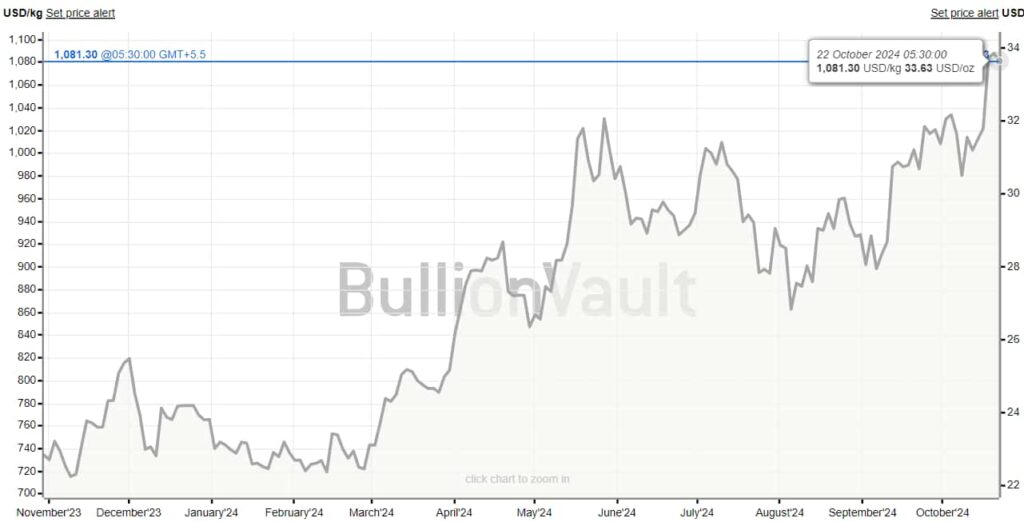Silver has been gaining momentum in the precious metals market, recently rising to its highest level in 12 years, now trading above $33 after a prolonged period of sideways movement.
Although often overshadowed by gold’s record-breaking performances, the gray metal is being quietly propelled by an overlooked yet significant factor—military demand. This hidden driver could push silver to new all-time highs in the near future.

The Military’s hidden silver demand
While silver’s industrial uses in electronics and renewable energy are well-known, its military applications are less discussed but equally crucial. Silver is a critical component in a wide range of military applications, from missiles to satellites and radar systems.
Experts suggest that military usage may even surpass industrial applications like photovoltaic panels for solar power generation and the production of electric vehicles.
Notably, the U.S. Department of Defense has not reported its silver usage since the mid-1990s, fueling speculation that demand from defense sectors is far higher than publicly acknowledged.
“However, five U.S. government agencies, including the Department of Defense, Department of Energy, Department of Interior, and the U.S. Geological Survey, have collectively stopped reporting on silver inventories since 1995-1996.” as noted in Jerusalem post.
With silver experiencing one of its ‘hottest bull markets of all time,’ this hidden military demand, combined with traditional industrial uses, could lead to a significant supply squeeze, pushing silver prices higher in the years to come.
India and China’s growing silver consumption
In addition to military applications, silver demand from India and China, the two most populous nations, is also a crucial driver of the metal’s market momentum.
Both countries have a long history of silver use, and their consumption is growing rapidly, particularly for industrial and investment purposes.
Furthermore, positive economic data from China, the world’s largest consumer of metals, has further fueled demand for silver.
The European Central Bank’s third rate cut of the year, aimed at controlling inflation, has also positively impacted the market.
India, on the other hand, has ramped up its silver imports for both industrial use and as a store of value, with silver often viewed as a safe-haven investment in the country.
Over the past five years, industrial demand has accounted for more than half of global silver consumption. This includes major markets like the U.S., China, India, Japan, South Korea, and Germany.
With industrial and renewable energy demand continuing to rise and supply constraints from declining ore grades and increasing production costs, silver prices are likely to maintain an upward trajectory.
Supply constraints and broader market drivers
On the supply side, the silver market faces significant challenges. Declining ore grades and higher production costs are contributing to a supply deficit, with the Silver Institute projecting demand to outpace supply by over 200 million ounces in 2024.
Additionally, silver’s inverse relationship with the U.S. dollar and Treasury yields is making it more attractive to investors, especially as a safe-haven asset during times of economic uncertainty.
Geopolitical factors, such as the ongoing conflicts in the Middle East and rising tensions in Eastern Europe, are also supporting silver’s safe-haven demand.
Furthermore, key political events like the upcoming U.S. elections are adding to market uncertainty, which could further drive silver’s appeal as an investment.
The bullish outlook for silver
With military demand acting as the hidden driver and industrial and renewable energy sectors contributing significantly, silver’s outlook remains bullish.
Institutional support is also rising, with investment banks like Morgan Stanley identifying silver as a strong bullish asset.
As awareness of the true extent of silver’s strategic importance grows, both in military and industrial sectors, prices could rise significantly, potentially leading to a new all-time high in the near future.








